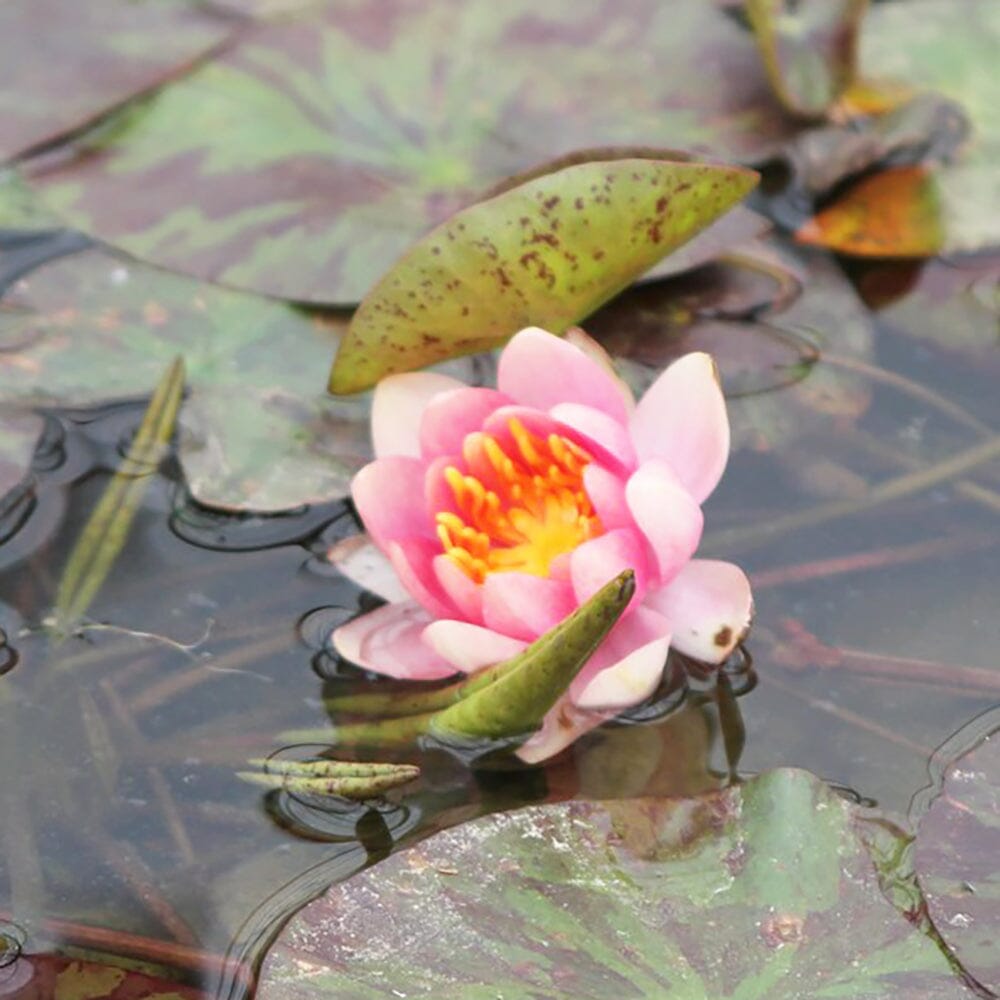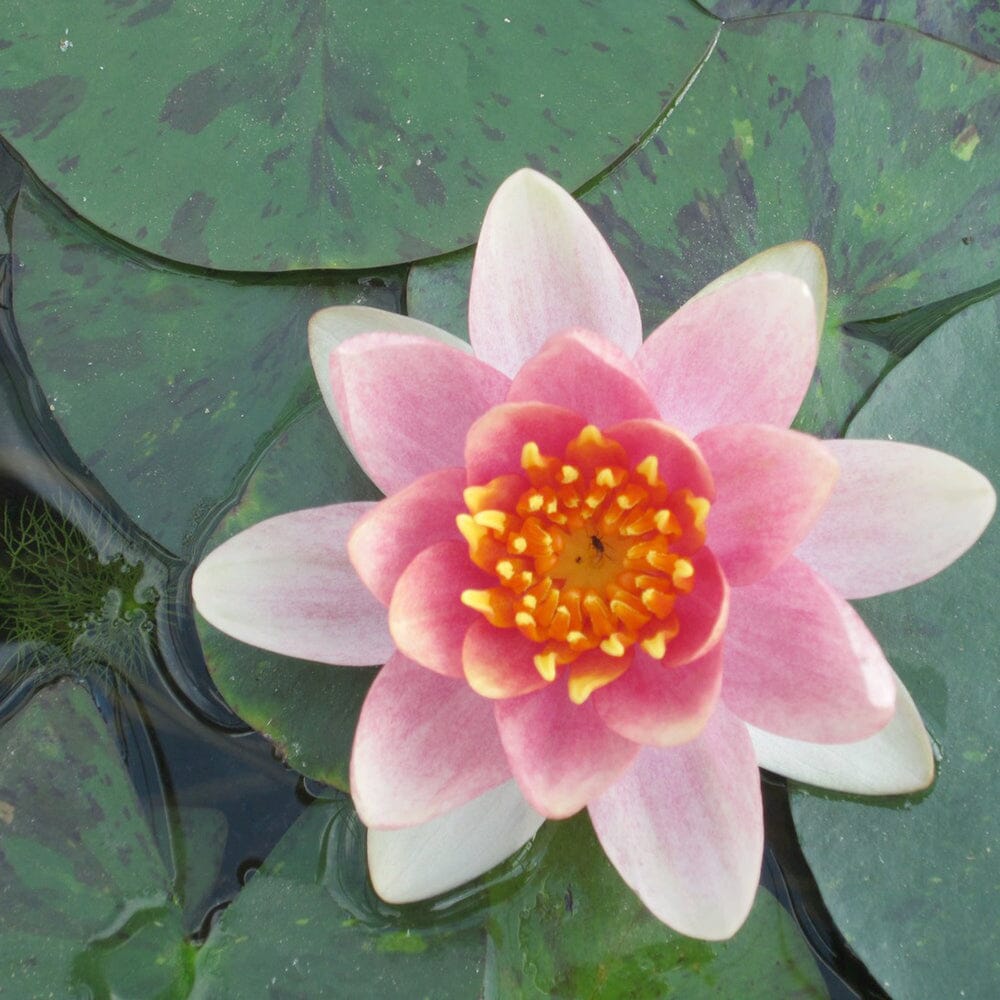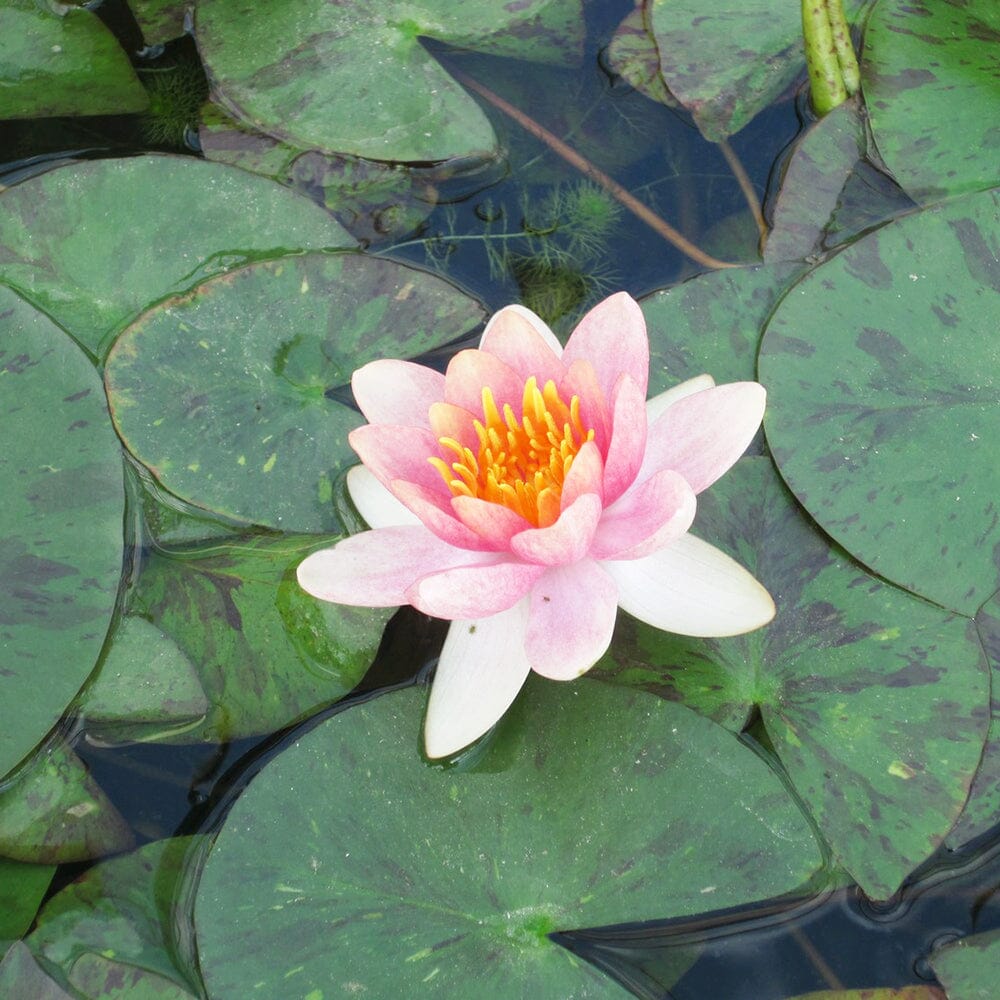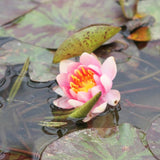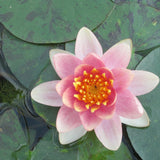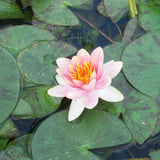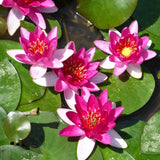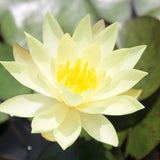Nymphaea Aurora Aquatic Pond Plant - Water Lily
Intriguingly, the gorgeous blooms of this exceptional water lily are yellow when they first open, turning orange on the second day, and taking on a pinkish-red colour on the third. An excellent choice for any size of pond.
Care Guide for Nymphaea Water Lilies:
Lighting: Nymphaea water lilies thrive in full sun to partial shade. They require a minimum of 5-6 hours of direct sunlight each day for optimal flowering. In outdoor ponds or water gardens, ensure that the plant receives ample sunlight. If the sunlight is too intense, provide some shade during the hottest part of the day to prevent leaf burn.
Water: Water lilies are aquatic plants and require water to grow. They prefer still or slow-moving freshwater environments, such as ponds or water gardens. The water depth should be appropriate for the variety, with the leaves floating on the water surface. Maintain a water temperature between 70-85°F (21-29°C) for optimal growth and flowering.
Nutrient Requirements: Nymphaea water lilies benefit from regular fertilization to promote healthy growth and abundant blooms. Use a specialized aquatic plant fertilizer formulated for water lilies. The fertilizer should be rich in essential nutrients, such as nitrogen, phosphorus, and potassium. Follow the manufacturer's instructions for dosage and frequency, as excessive fertilization can lead to algae overgrowth.
Water Quality: Maintain good water quality to support the health of your water lily and other aquatic organisms. Regularly test the water for pH, which should be slightly acidic to neutral (around 6.5-7.5). Ammonia and nitrate levels should be kept low, as they can harm the plant. Perform regular water changes and use a mechanical filter to remove debris and excess nutrients.
Planting: When planting a water lily, ensure that the rhizome is positioned correctly. The rhizome should be planted horizontally in a container with a suitable aquatic planting medium. The container should be placed at the appropriate depth, allowing the leaves to float on the water surface. Avoid burying the rhizome too deeply, as it can inhibit growth.
Pruning: Regular pruning is essential to maintain the health and appearance of your water lily. Remove yellowing or decaying leaves and spent flowers. Trim back overgrown or crowded leaves to allow for proper light penetration. Pruning also helps control the plant's spread and prevents overcrowding in the water garden.
Winter Care: Most water lilies are hardy and can withstand cold temperatures. However, if you live in an area with harsh winters, it is recommended to protect the plant by moving it to a deeper part of the pond or using a floating de-icer to prevent freezing around the plant. In extreme cold regions, you can lift the plant and store it in a frost-free area until spring.
Remember, the specific care requirements may vary depending on the exact variety of your water lily. It's always best to consult with local nurseries or aquatic plant experts who may be familiar with the specific variety you have to get more tailored care instructions.
Selection:
Choose water lily varieties that are suitable for your pond size, water depth, and climate. Common water lily types include hardy water lilies (Nymphaea spp.) and tropical water lilies (Nymphaea spp.).
Placement:
Plant water lilies in containers specifically designed for aquatic plants, or use planting baskets filled with aquatic soil. Position the containers in a suitable area of the pond where the water is about 1 to 3 feet deep.
Sunlight:
Water lilies thrive in full sun, so choose a location in the pond that receives at least 6-8 hours of direct sunlight per day. Avoid placing water lilies in areas shaded by trees or tall plants, as they may hinder their growth.
Water Depth:
Different water lily varieties have different water depth requirements. Plant hardy water lilies at a depth of about 1-2 feet, while tropical water lilies prefer a depth of 2-3 feet. Check the specific requirements of the water lily variety you have chosen.
Water Temperature:
Water lilies are sensitive to extreme temperatures, especially tropical varieties. Ensure that the water temperature in your pond remains within the optimal range for your chosen water lily species. In colder regions, hardy water lilies can withstand freezing temperatures, while tropical water lilies may need to be overwintered indoors.
Fertilization:
Water lilies are heavy feeders and benefit from regular fertilization during the growing season. Use specially formulated aquatic plant fertilizers to provide essential nutrients to the plants. Follow the package instructions for the appropriate dosage and frequency of application.
Maintenance:
Regularly remove dead or dying leaves and flowers from the water lily plants. Thin out crowded plants as needed to maintain proper spacing and prevent overcrowding. Monitor and control the growth of algae in the pond, as excessive algae can inhibit the growth of water lilies.
Winter Care:
In colder regions, hardy water lilies can survive freezing temperatures if the pond does not completely freeze. To protect tropical water lilies from freezing temperatures, they should be overwintered indoors in a suitable container with water and adequate light.
Legal Considerations:
Some water lily varieties, especially tropical types, may be regulated or prohibited in certain regions due to their invasiveness. Check local regulations and restrictions before introducing water lilies to your pond. Always research the specific care requirements of the water lily variety you have chosen, as each species may have unique needs. By following these general guidelines and providing appropriate sunlight, water depth, fertilization, and maintenance, you can enjoy the beauty and elegance of water lilies in your pond.








